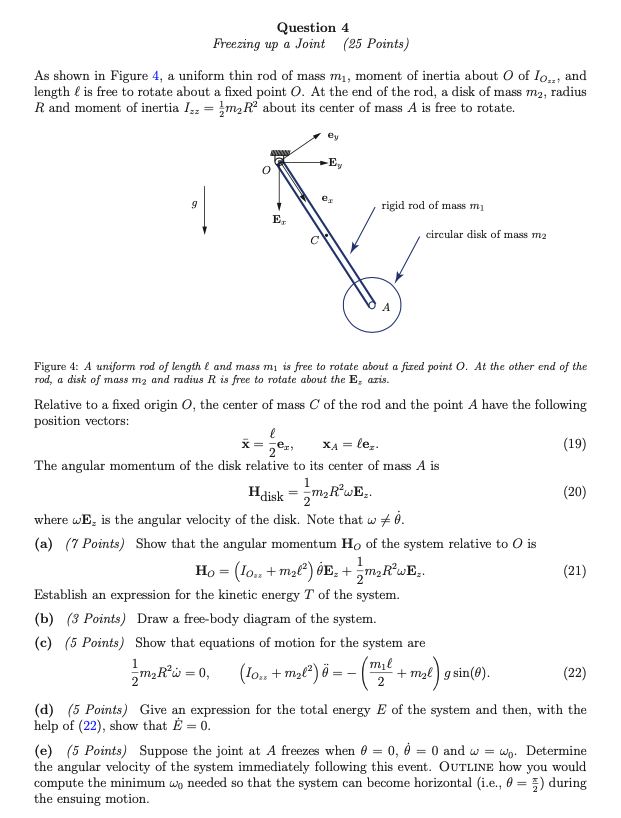Home /
Expert Answers /
Mechanical Engineering /
as-shown-in-figure-4-a-uniform-thin-rod-of-mass-m1-moment-of-inertia-about-o-of-iozz-a-pa279
(Solved): As shown in Figure 4, a uniform thin rod of mass m1, moment of inertia about O of IOzz, a ...
As shown in Figure 4, a uniform thin rod of mass , moment of inertia about of , and length is free to rotate about a fixed point . At the end of the rod, a disk of mass , radius and moment of inertia about its center of mass is free to rotate. Figure 4: A uniform rod of length and mass is free to rotate about a fized point . At the other end of the rod, a disk of mass and radius is free to rotate about the aris. Relative to a fixed origin , the center of mass of the rod and the point have the following position vectors: The angular momentum of the disk relative to its center of mass is where is the angular velocity of the disk. Note that . (a) (7 Points) Show that the angular momentum of the system relative to is Establish an expression for the kinetic energy of the system. (b) (3 Points) Draw a free-body diagram of the system. (c) (5 Points) Show that equations of motion for the system are (d) (5 Points) Give an expression for the total energy of the system and then, with the help of , show that . (e) (5 Points) Suppose the joint at freezes when and . Determine the angular velocity of the system immediately following this event. OutLine how you would compute the minimum needed so that the system can become horizontal (i.e., ) during the ensuing motion.
